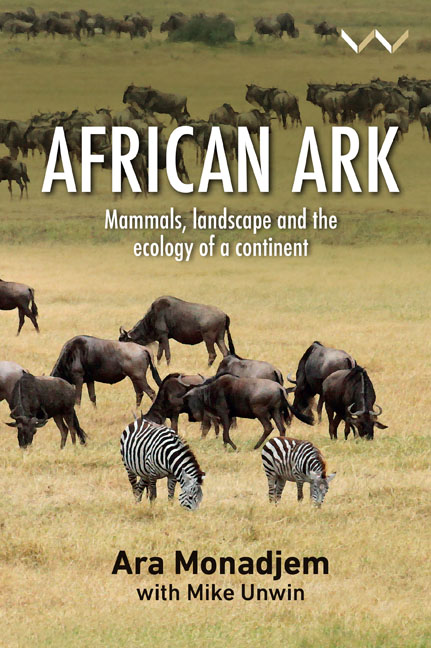Book contents
- Frontmatter
- Dedication
- Contents
- List of Plate Photographs
- List of Figures and Tables
- Acknowledgements
- Foreword
- Preface
- Chapter 1 A Continent of Plenty
- Chapter 2 The Species Conundrum
- Chapter 3 The History of Africa’s Mammals
- Chapter 4 Islands as Species Factories
- Chapter 5 Evolution on the African Mainland
- Chapter 6 Giant Mammals Shaping the Landscape
- Chapter 7 A Place for Every Species
- Chapter 8 Fluctuating Populations
- Chapter 9 The Human Factor
- Chapter 10 The Sinking Ark?
- Glossary
- Notes
- References
- Recommended Reading
- Index
Chapter 2 - The Species Conundrum
Published online by Cambridge University Press: 29 November 2023
- Frontmatter
- Dedication
- Contents
- List of Plate Photographs
- List of Figures and Tables
- Acknowledgements
- Foreword
- Preface
- Chapter 1 A Continent of Plenty
- Chapter 2 The Species Conundrum
- Chapter 3 The History of Africa’s Mammals
- Chapter 4 Islands as Species Factories
- Chapter 5 Evolution on the African Mainland
- Chapter 6 Giant Mammals Shaping the Landscape
- Chapter 7 A Place for Every Species
- Chapter 8 Fluctuating Populations
- Chapter 9 The Human Factor
- Chapter 10 The Sinking Ark?
- Glossary
- Notes
- References
- Recommended Reading
- Index
Summary
We saw in chapter 1 that Africa plays host to an amazing array of indigenous life forms. More than 1 100 mammal and 2 200 bird species have been recorded on the continent, and although no official count of insect species is yet available, we can be sure that it will number well over 100 000 and that an even greater number remain undiscovered. How do zoologists cope with such a staggering diversity of species? Before we attempt to answer this question, we need to know exactly what we mean by the term ‘species’.
FUNCTION OR FORM?
Before considering how we humans make sense of all this bewildering natural variety, it might be instructive to see how other animals go about it. Gorillas (genus Gorilla), as a close relative of ours, provide an interesting example (figure 2.1). These herbivorous great apes seek out specific plants to eat, pursue others for their medicinal value (Huffman 2003), and avoid those that they know to be either poisonous or not sufficiently nutritious to make harvesting them worthwhile. Gorillas, in other words, are ethnobotanists par excellence. They can recognise an exceptionally large variety of plant species. At Bwindi Impenetrable National Park in western Uganda, where gorillas have been studied for decades, botanists have compiled a plant checklist of 1 405 species (Plumptre et al. 2007). How does a gorilla acquire and manage its knowledge of all these plant species? We don't know what thought processes go through the great ape's mind before it plucks a leaf from a shrub, but we can presume it has its own classification system for plants, in which they are categorised according to the functions they perform: this one is edible, this one is poisonous, this one can cure an irritated bowel – and so on.
In a similar way, vervet monkeys (Chlorocebus aethiops) take a functional approach to categorising predators. Previous research (Seyfarth et al. 1980) has shown that these sociable primates use different warning vocalisations to distinguish between their three most significant predators: leopards, eagles and snakes. From a vervet monkey's perspective, this makes perfect sense. These three predators hunt in different ways – eagles swooping from above, leopards stalking through the undergrowth and snakes lurking in the grass – and so each represents a different form of danger.
- Type
- Chapter
- Information
- African ArkMammals, Landscape and the Ecology of a Continent, pp. 37 - 55Publisher: Wits University PressPrint publication year: 2023

